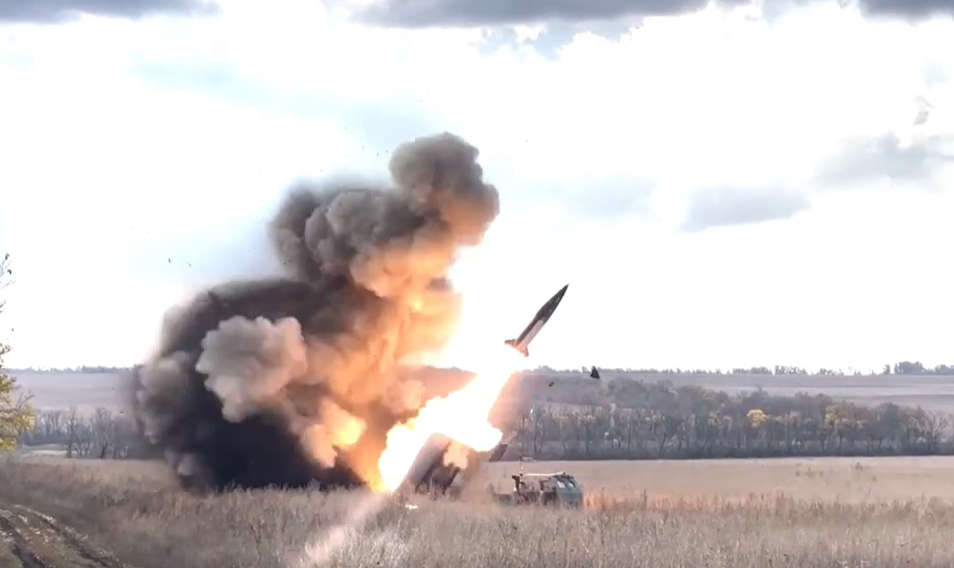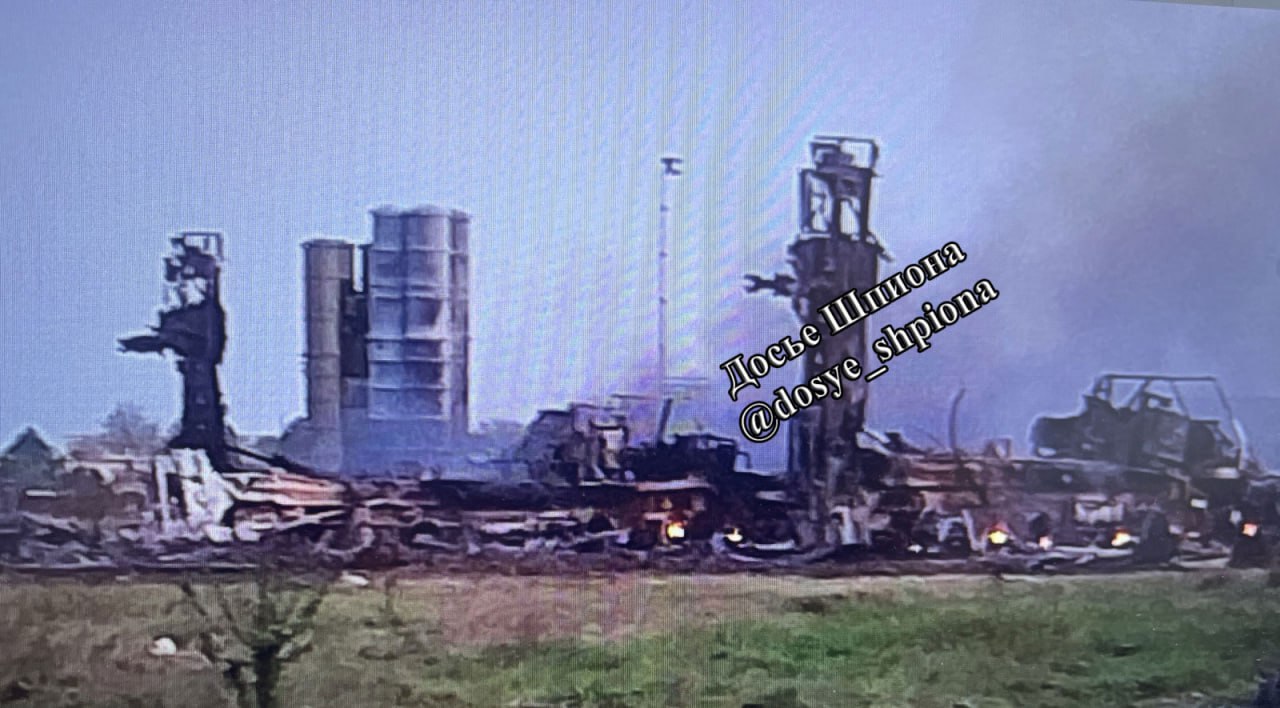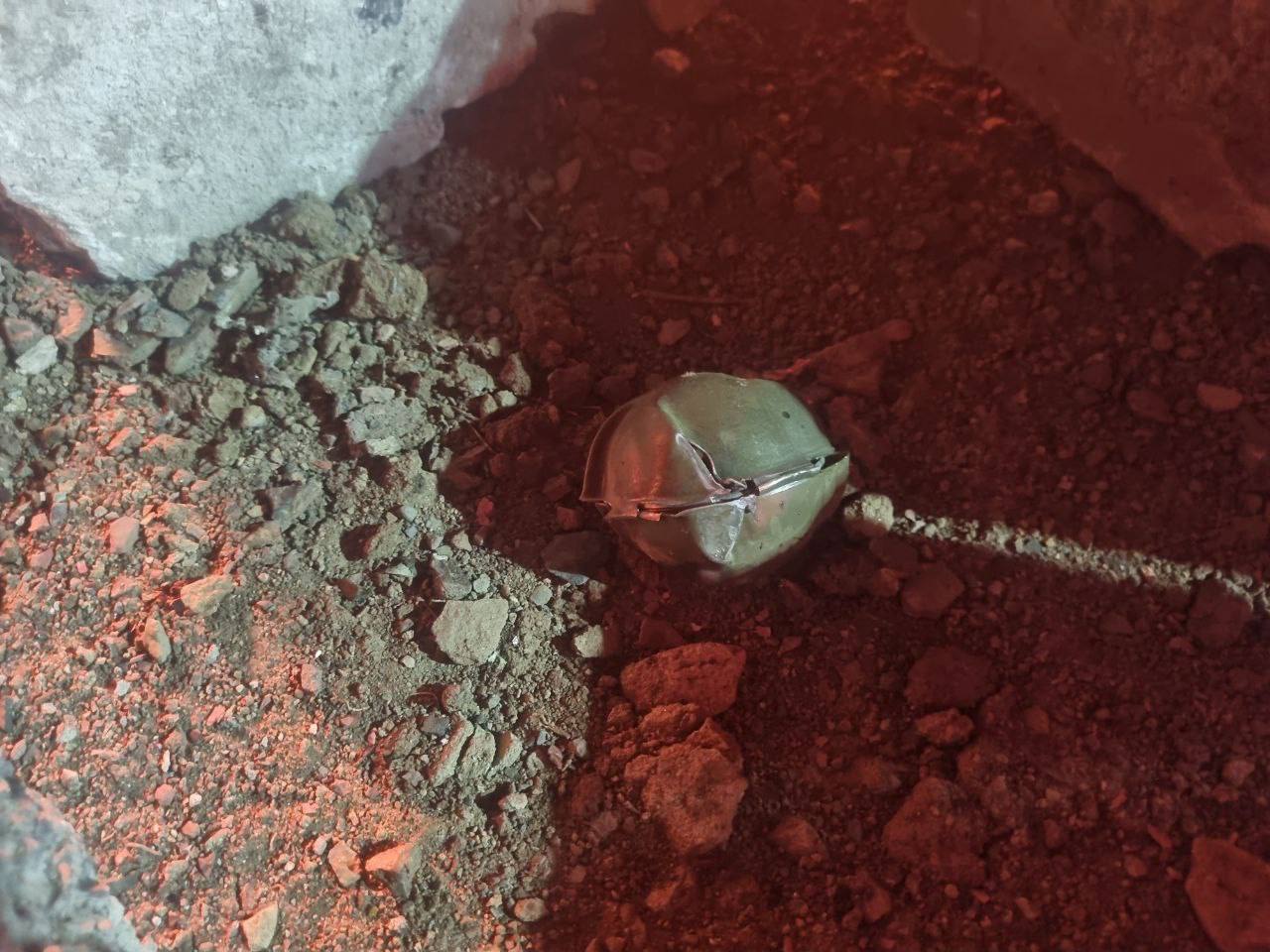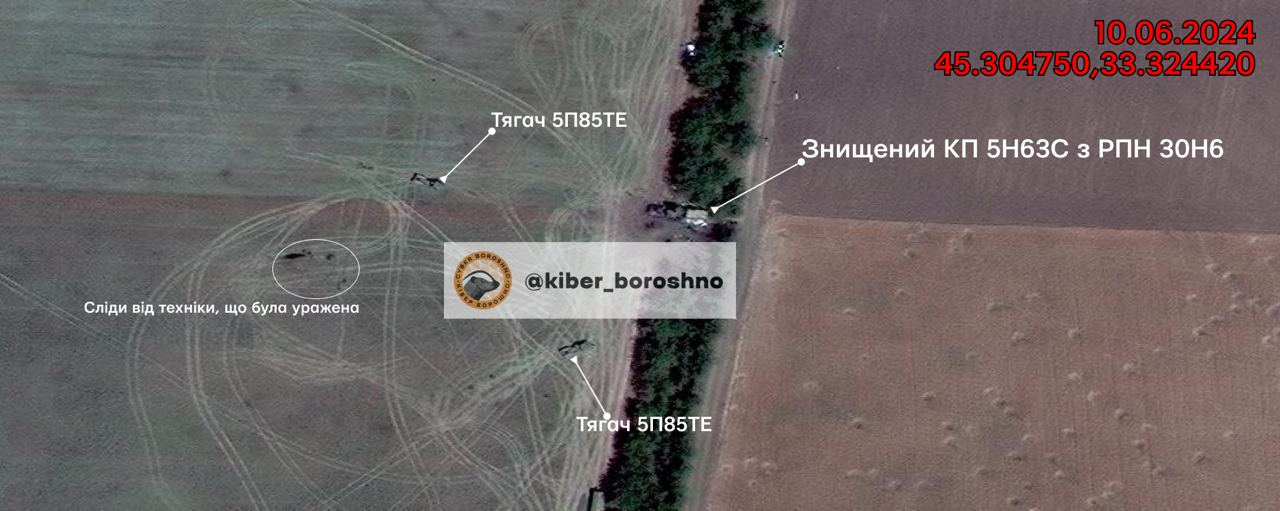
A few weeks after reports surfaced in the American press in mid-March that the United States was preparing to transfer new batches of ATACMS tactical ballistic missiles to Ukraine, there was a notable uptick in missile strikes targeting Russian air defense systems in the temporarily occupied territories of eastern Ukraine and Crimea.
In addition to air defense systems, the missiles also hit other important facilities and equipment of the Russian invaders.
The first publicly known strike occurred on April 17, when MGM-140 ATACMS missiles targeted Russian facilities near the military airfield in Dzhankoy.
This airfield hosts the 39th Helicopter Regiment of the 27th Mixed Aviation Division, part of the 4th Guards Air and Air Defense Forces Army of the Southern Military District, comprising three aviation squadrons.
The missile strike destroyed three launchers and a radar station of the Russian S-400 Triumf air defense system.

Following this, a second significant strike was reported at the reception and repair center for military equipment of the 77th Anti-Aircraft Missile Brigade in Korenovsk, Krasnodar Krai.
At the time of the strike, two S-300 launchers were present at the site. Additionally, a secondary detonation of unknown ammunition occurred, causing further damage. The Russian occupiers reported casualties, including both killed and wounded personnel.
The @war_home telegram channel, known for publishing photos of missile debris, posted an image of a missile fragment, suggesting it was the tail section of an ATACMS.

Satellite imagery confirmed the extensive damage to the Russian air defense systems and the airfield in Dzhankoy, showing the remnants of four S-400 launchers and evidence of a fire near an ammunition depot.

It is worth noting that representatives of the Armed Forces of Ukraine or the Ukrainian government didn’t make any comments on the issue. Information about these strikes came from social media, news agencies, and other media, including those of the aggressor country.
On the night of April 30, another missile attack targeted the Dzhankoy military airfield. Days later, satellite images revealed the destruction of an S-300 or S-400 air defense system launcher.

It was not officially reported what kind of weapon was used to hit the airport, but the occupation administration of Crimea claimed that it was an ATACMS tactical ballistic missile strike.
The ongoing strikes have not been limited to these initial incidents. Later the Ukrainian Defense Forces started targeting the Russian invaders“ military facilities in the eastern part of Ukraine that is currently under temporary Russian occupation.
On May 1, a video was posted online showing the Armed Forces of Ukraine striking a concentration of Russian army personnel near the village of Rohove in the Luhansk region.
The enemy was struck by three ATACMS missiles with a cluster warhead, approximately 78 kilometers from the line of contact. The Russian invaders then claimed that the strike was carried out using ATACMS tactical ballistic missiles.

On the evening of May 10, the Ukrainian Armed Forces targeted an oil depot in the occupied town of Rovenky, Luhansk region.
The Russian invaders claimed that the strike was carried out using ATACMS tactical ballistic missiles. They also shared photographs that allegedly showed M74 submunitions, which are contained in the cluster warhead of these American missiles, found at the site of the oil depot.

Two days earlier, another oil depot in occupied Luhansk was also struck. The Russians claimed that this attack was also made with ATACMS missiles.
The destruction of these fuel reserves likely complicated the invaders’ ability to refuel their military equipment in the area at that time.
On May 13, the Ukrainian Defense Forces struck an ammunition depot of the Russian invasion army in the Luhansk region.
The attack resulted in a massive fire and the detonation of shells near the occupied town of Sorokine (formerly Krasnodon). This settlement lies about 130 kilometers from the front line and is located near the border with Russia.
To destroy the enemy’s ammunition depot, the Ukrainian military likely used American ATACMS tactical ballistic missiles.
On the night of May 14-15, ATACMS missiles with cluster warheads struck the Belbek military airfield in the temporarily occupied Crimea, used by Russian combat aircraft.
After that, local residents posted photos on social media of unexploded M74 submunitions, which are used to arm these American tactical ballistic missiles in service with the Ukrainian Armed Forces.
As a result of this strike, two Russian MiG-31 fighters were destroyed. These were MiG-31 fighter interceptors, not to be confused with the MiG-31K version, which serves as a carrier for the Kinzhal ballistic missile.

Satellite images by Maxar show the remains of Russian warplanes, allowing for the accurate identification of the destroyed aircraft.

In addition, satellite images of the airplane parking lots reveal that, besides the MiG-31, at least one Su-27 or Su-35 fighter jet was destroyed, and one MiG-29 was also hit.

It is likely that other Russian aircraft present at the airbase at the time of the missile strike were also damaged.

The attack on the Belbek airfield also destroyed elements of the S-400 anti-aircraft system that covered the airfield.

Photos of a destroyed radar station and a Russian air defense launcher were posted online.
The next night, air bases in Crimea were attacked again. Belbek was once more hit by ballistic missiles, as well as Hvardiyske, located 13 kilometers from Simferopol. Fires broke out at both military facilities.

The 37th Mixed Regiment of the Russian Aerospace Forces, including a squadron of Su-24M bombers and a squadron of Su-25 attack aircraft, is stationed at Hvardiyske airfield and is involved in strikes against Ukraine.

Both airfields were also equipped with air defense systems, including S-400 air defense systems.
The Russian Ministry of Defense confirmed the ATACMS strike and, as usual, claimed to have intercepted all ballistic missiles.
A week later, late in the evening on May 23, a Russian FSB communications center was struck near the village of Semidvirya next to Alushta in southern Crimea. Eyewitnesses published a video showing a series of powerful explosions.
The Russian occupation administration stated that a “hit on an empty commercial facility was recorded near Alushta.” However, local sources reported publicly that the target of the attack near Alushta was likely the invaders’ communication facility.

The Crimean Wind Telegram channel claimed that at least six ATACMS missiles had hit a military facility of the aggressor country.

Satellite images of the aftermath of the strike on military unit 28735, which includes several seriously damaged buildings, appeared.
These buildings were used to house special equipment needed to process signals and adjust the space communications antenna.
A few days later, the Divizion-TIVAZ Telegram channel posted a video of the Ukrainian Armed Forces launching a missile attack on a Russian S-400 anti-aircraft system in the Donetsk region with ATACMS ballistic missiles with a cluster warhead. The attack occurred near the village of Klenivka, 65 kilometers from the front line.
The footage shows that the invaders deployed four self-propelled launchers, a multifunctional radar, and other vehicles of the air defense system.
During this attack, a Ukrainian drone recorded an attempt by the Russians to intercept the ATACMS missiles, launching several anti-aircraft missiles simultaneously.
However, they failed, and several ballistic missiles hit the location of the air defense system with their submunitions.
As a result of the damage, debris ignited, followed by explosions of anti-aircraft missiles on the launchers. Other vehicles and personnel of the enemy air defense system were also probably hit by the debris.
Presumably, this was the same Russian air defense system reported destroyed a few days earlier. Relevant photos and videos were posted online.

At the time, it was stated that the strike resulted in:
However, it was reported that this system was allegedly deployed near the airfield near Mospyne in the Donetsk region, 40 km from the front line.
On the evening of May 27, a Russian Nebo-M radar system was damaged by an ATACMS missile strike on an airfield near occupied Luhansk.
The video posted online showed a large area covered by numerous fire pits.
That same evening, a video was published on social media showing an alleged launch of ATACMS ballistic missiles, reportedly in the direction of Russian-occupied Luhansk.
On the night of May 30, the Ukrainian military successfully struck the Kerch ferry crossing, which the Russians were actively using to supply their troops in the temporarily occupied Crimea, with ATACMS ballistic missiles.

The General Staff of the Armed Forces of Ukraine released satellite images showing the aftermath of the ferry attack.

The military reported that two ferries carrying out rail and road transportation were heavily damaged as a result of the strike. One of them ran aground.
The two ferries were hit in separate locations. The Avangard ferry was struck in the small port of Crimea on the outskirts of the temporarily occupied city of Kerch.

The railway ferry CONRO TRADER was also damaged near the berth of the Kerch Fishing Seaport.

These ferries were the only ones transporting railroad wagons to Kerch. Therefore, even their temporary loss caused significant problems for the military logistics of the Russian invaders in Crimea.
The General Staff of the Armed Forces of Ukraine reported that on June 10, the Ukrainian military launched a coordinated missile strike against Russian air defense positions in the temporarily occupied Crimea. The strikes successfully targeted one S-400 air defense system near Dzhankoy and two S-300 anti-aircraft missile divisions near Chornomorske and Yevpatoriya.
The General Staff emphasized that none of the missiles launched were intercepted by Russian air defenses. Following the strikes, the S-300/S-400 radars in these areas ceased operation.
The Russian Astra Telegram channel confirmed this information, citing its own sources. They reported that the missile strike damaged two Russian S-300 systems and four radars in Crimea. According to their information, the Ukrainian Defense Forces used at least 10 ATACMS missiles for this strike, none of which were shot down.
According to the Astra channel, four ballistic missiles hit the location of the 31st Air Defense Division of the Russian Defense Ministry in the Dzhankoy district, damaging two radars. Another four missiles struck the division’s location in the Saky district, resulting in further military equipment damage.
In addition, two missiles hit the 31st Air Defense Division’s position in the Chornomorsk district, a few kilometers from the village of Hromove, damaging two more radars and two S-300 systems. There were also casualties among the personnel.
Two days later, OSINT researchers from the CyberBoroshno Telegram channel published satellite images showing the damaged S-300 system equipment deployed by the Russians near the village of Velyke in the Yevpatoria district.

The images revealed that the 5N63S self-propelled command post, which controls the 30N6 anti-aircraft missile target acquisition radar, was hit. Additional images showed traces of other damaged equipment being removed.

A satellite image of the S-400 air defense system’s position near the village of Rubynivka in the Dzhankoy district was also published, showing the process of dismantling equipment and changing positions after the 48Ya6-K1 Podlet radar was damaged in the attack.
On the night of June 11-12, the Ukrainian Armed Forces launched another missile attack on the Russian S-400 Triumf air defense system, located about 2.5 kilometers from the village of Verkhnosadove in the Bakhchisaray district of Crimea.

Satellite imagery from the CyberBoroshno OSINT project showed the destruction of the 92N6 radar, a BAZ-6306 “Voshchyna” mobile generator, and a damaged 51P6 launcher.
The ASTRA Telegram channel reported that 12 ballistic missiles were fired, with seven allegedly shot down. However, their data indicated that two S-400 launchers and a radar station were destroyed near Belbek, and another radar was damaged near Cape Fiolent.

On the night of June 24, ATACMS missiles struck the long-range space communications center in the village of Vitino, officially known as the National Space Facilities Control and Test Center (military unit 81415). This facility was seized by Russian forces during the annexation of Crimea in 2014.

OSINT researchers from the CyberBoroshno Telegram channel discovered that at least one Krasukha electronic warfare system was present at the center, which is used by the Russians to protect command posts and other critical sites.
Russian forces near Yevpatoria oversee the orbital operations of their spacecraft, including the GLONASS navigation system and space monitoring.

The Armed Forces of Ukraine use both M142 HIMARS wheeled launchers and M270 tracked launchers to deploy ATACMS tactical ballistic missiles.
Unlike the HIMARS, which are equipped with only one missile, the M270 systems can launch two ATACMS missiles simultaneously.
In June, a video surfaced showing four launchers firing eight ATACMS missiles at once.
The Commander-in-Chief of the Armed Forces of Ukraine released a video of an ATACMS cluster ballistic missile strike on a Russian S-300 air defense system on the night of June 15-16, targeting the outskirts of occupied Mariupol in the Donetsk region.
Intelligence confirmed the destruction of a radar station and several launchers.
The enemy’s SAM system was struck east of the village of Mangush, approximately 7 kilometers from the Mariupol airfield.
Підтримати нас можна через:
Приват: 5169 3351 0164 7408 PayPal - [email protected] Стати нашим патроном за лінком ⬇
Subscribe to our newsletter
or on ours Telegram
Thank you!!
You are subscribed to our newsletter